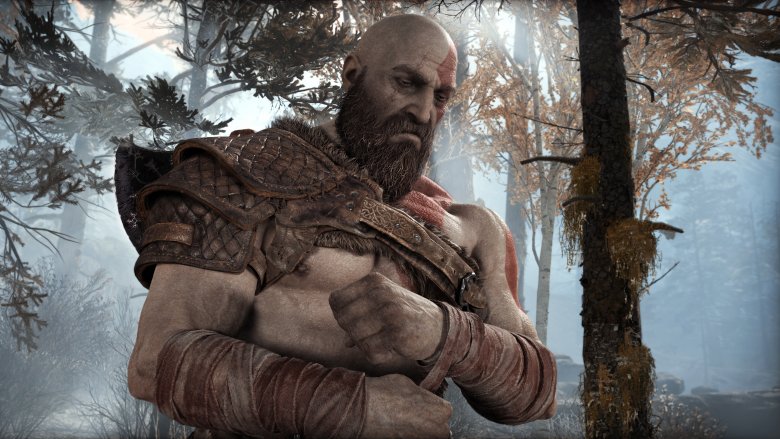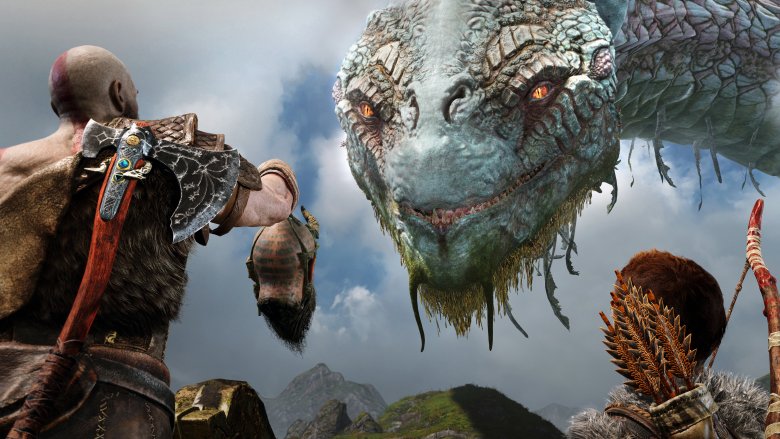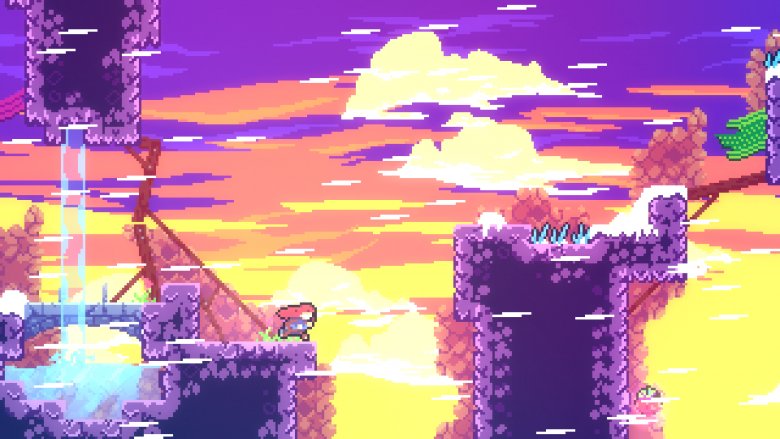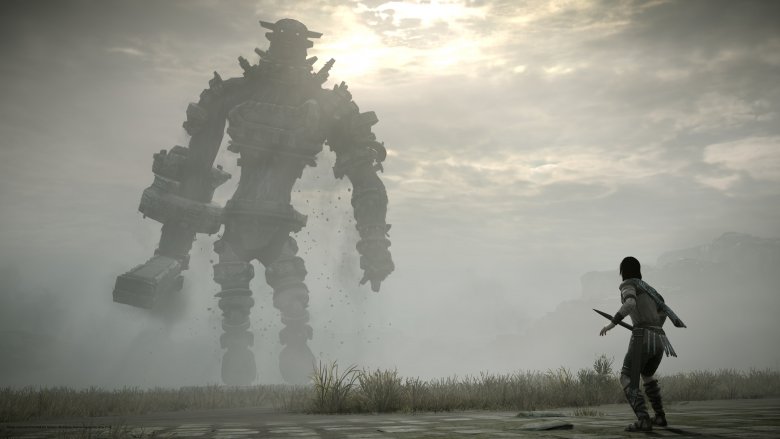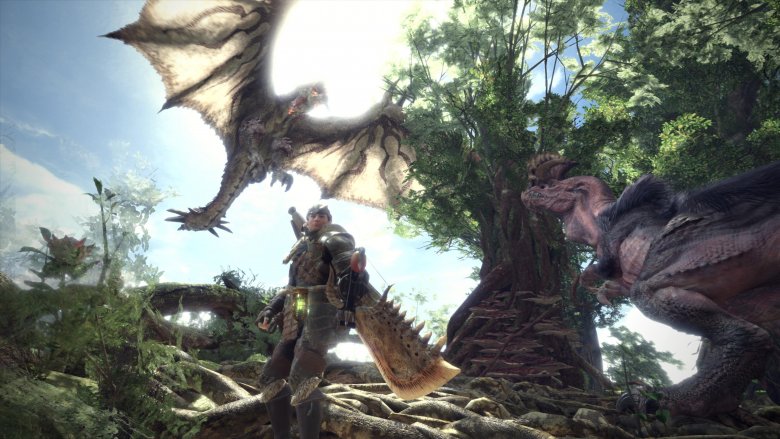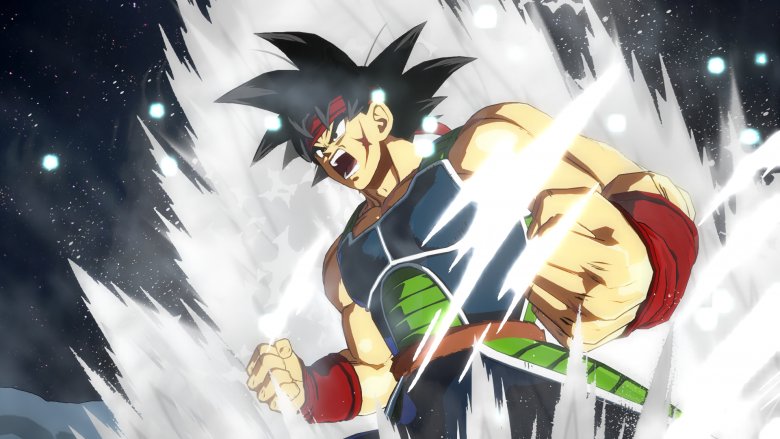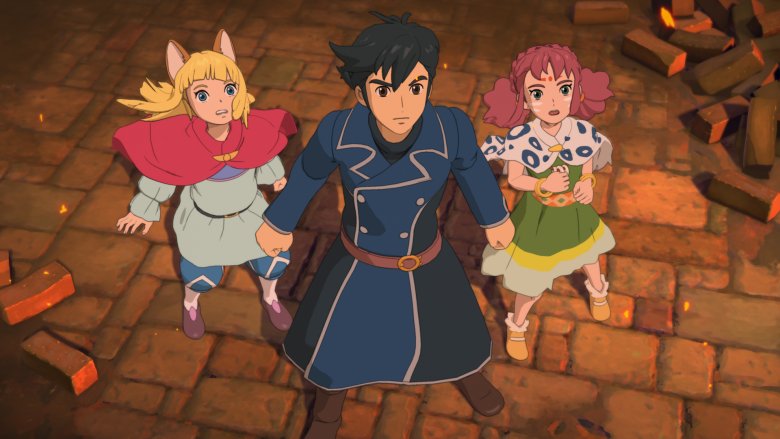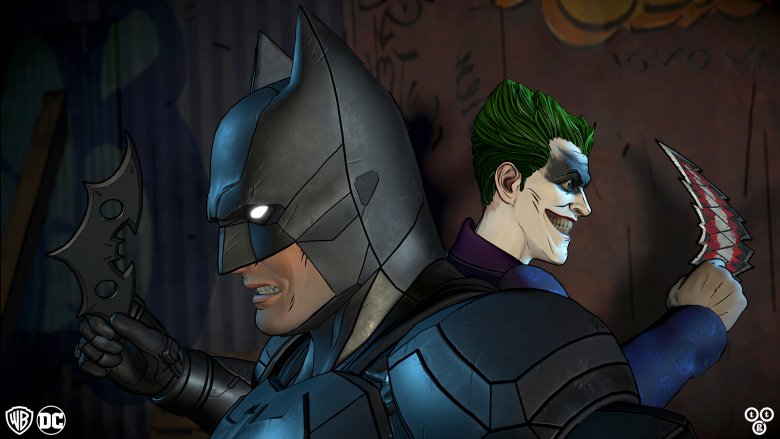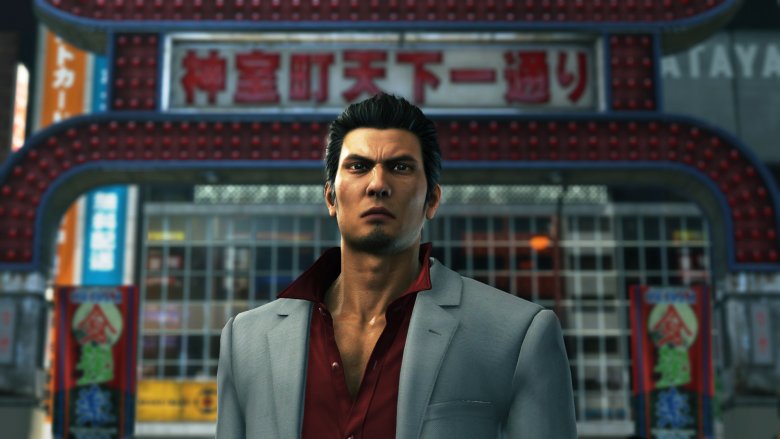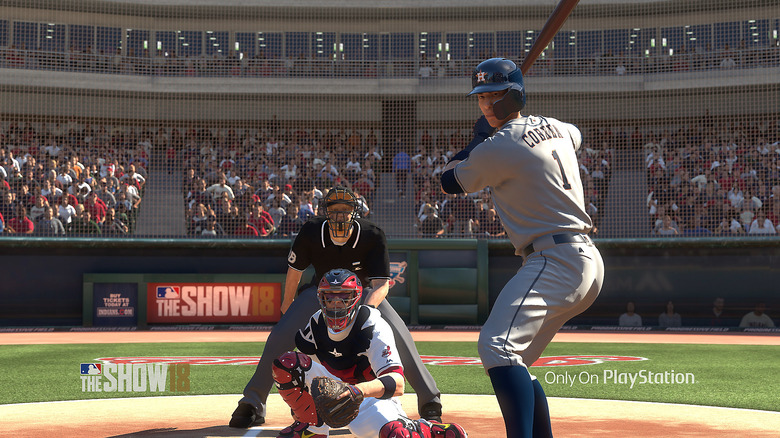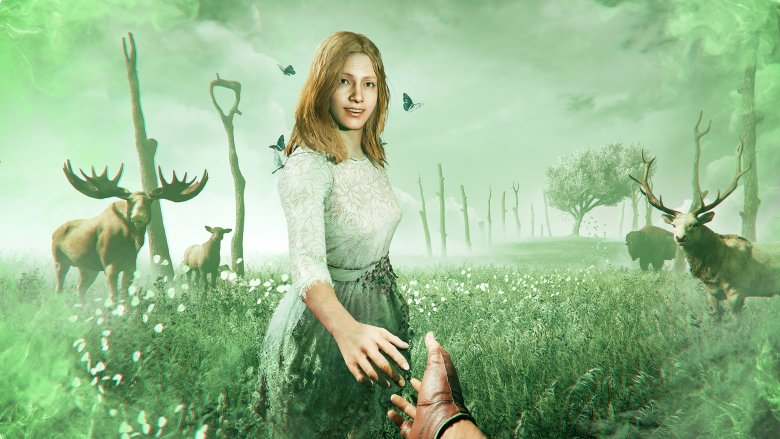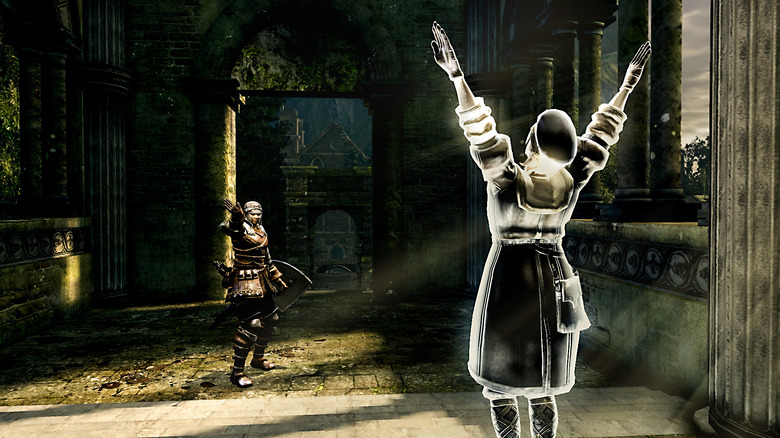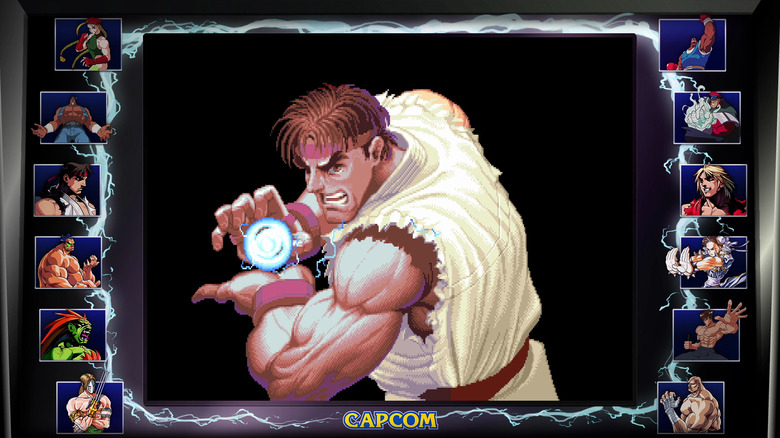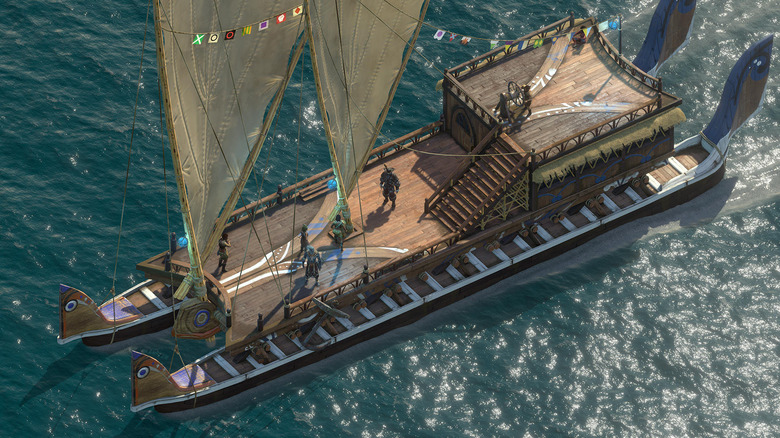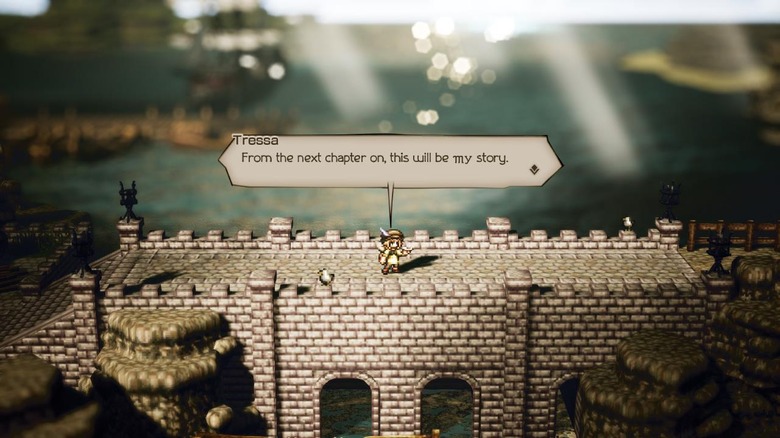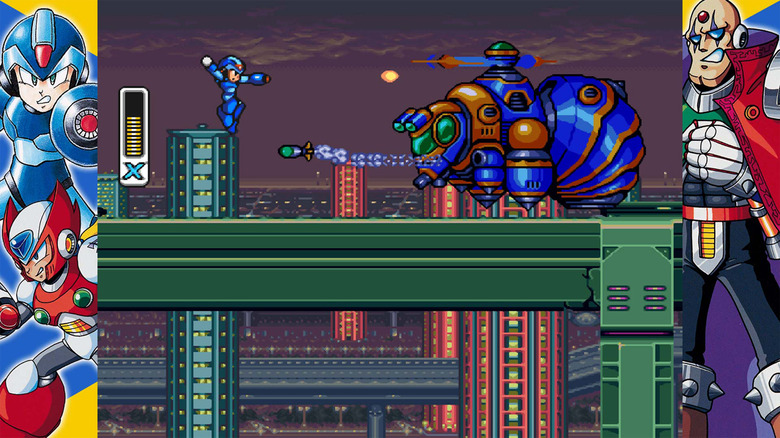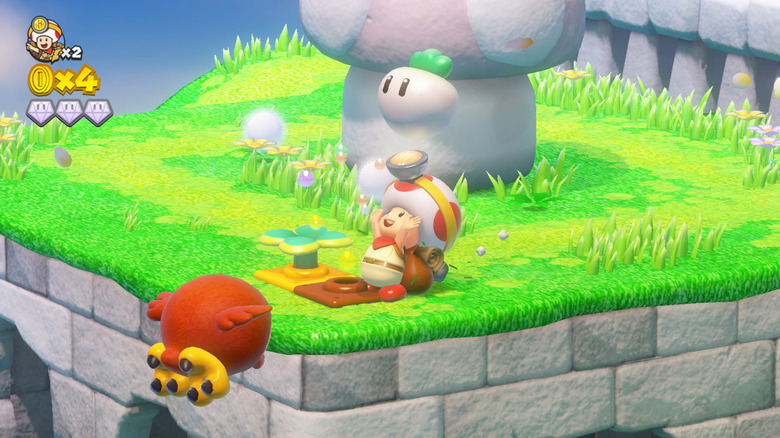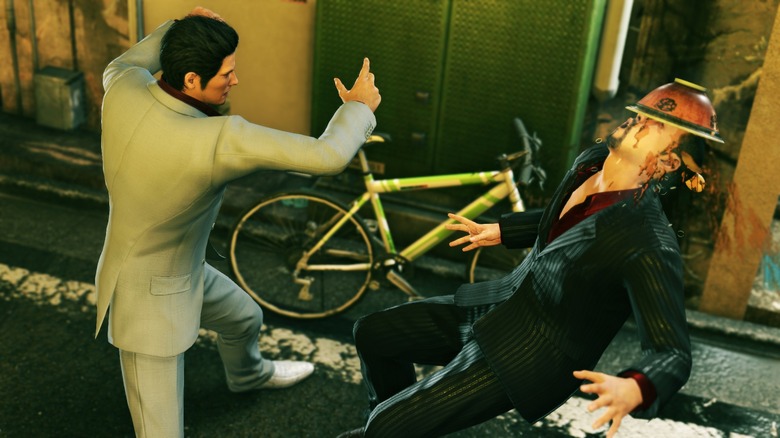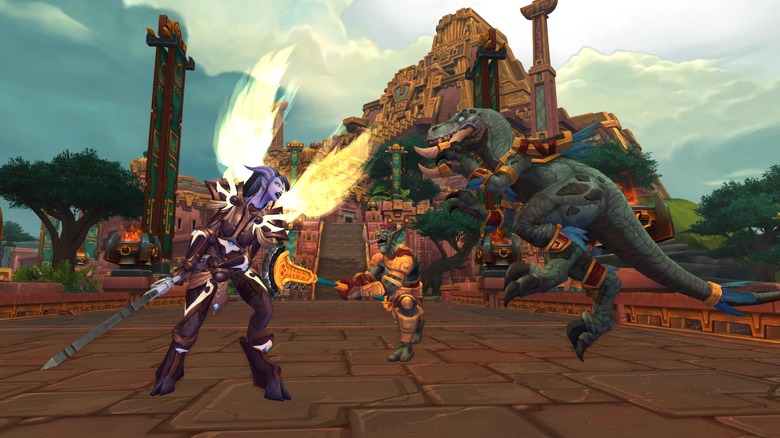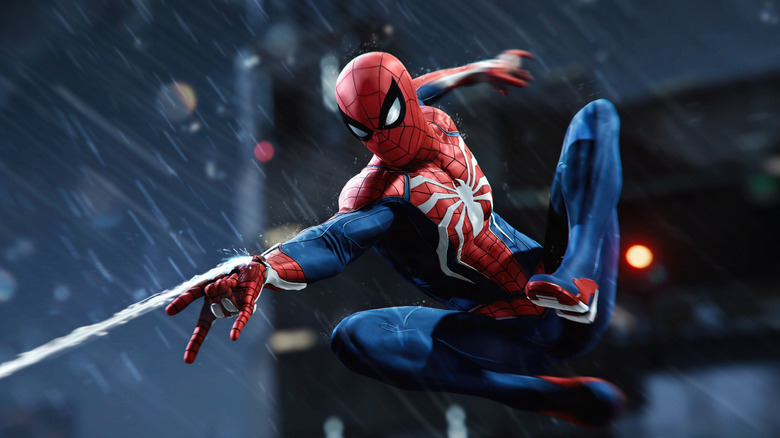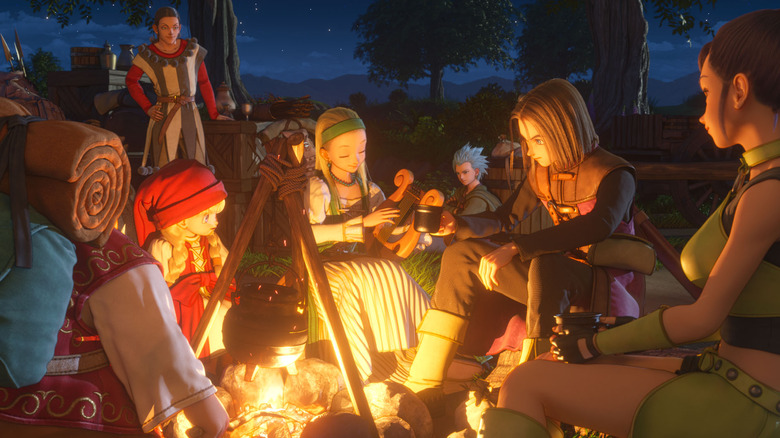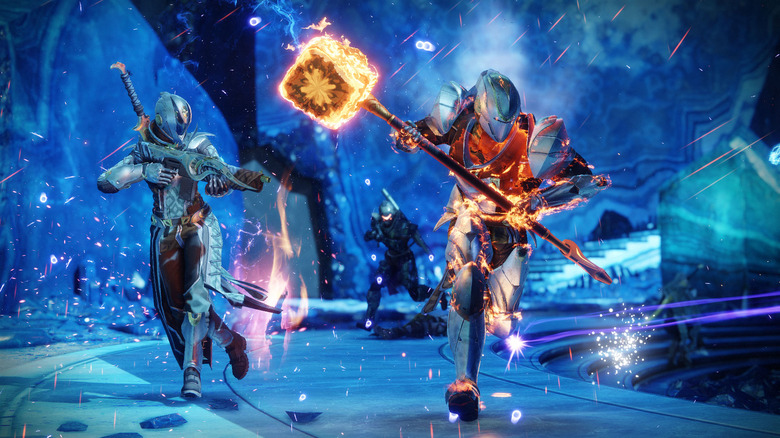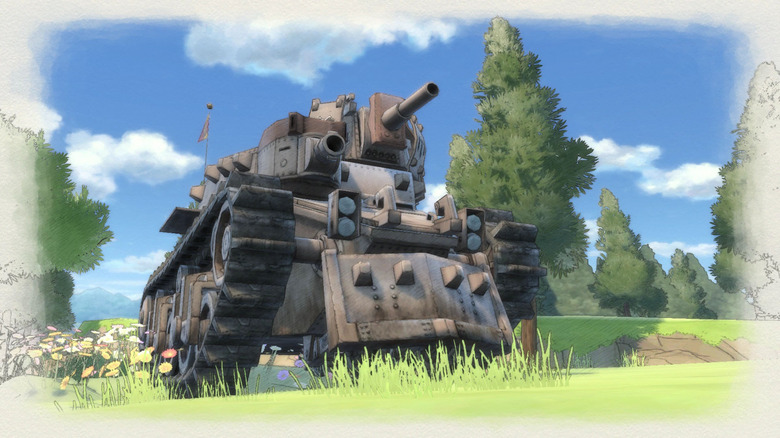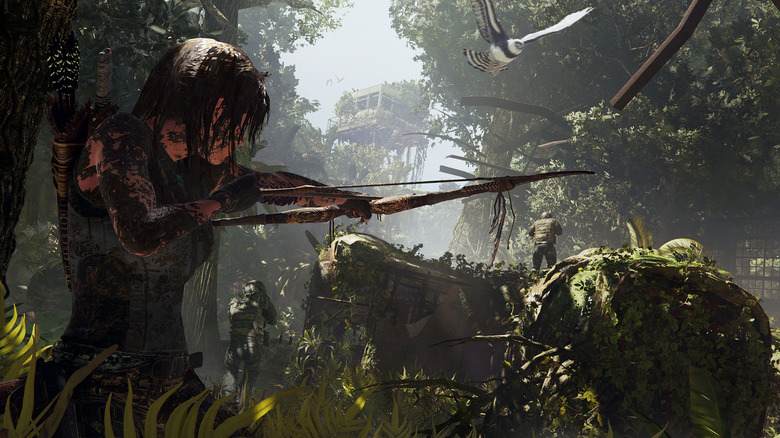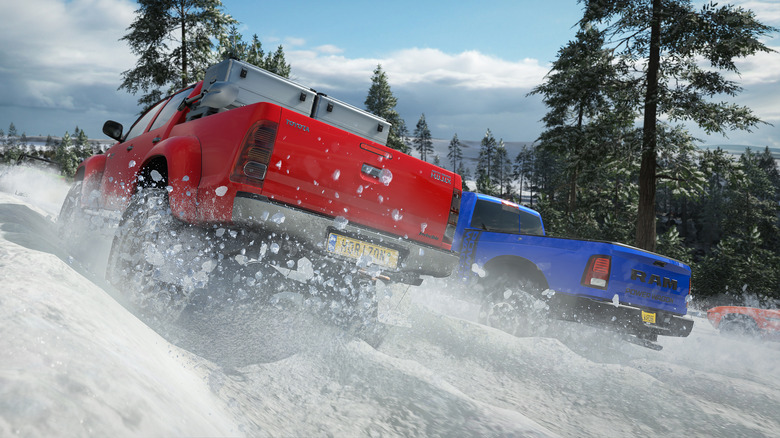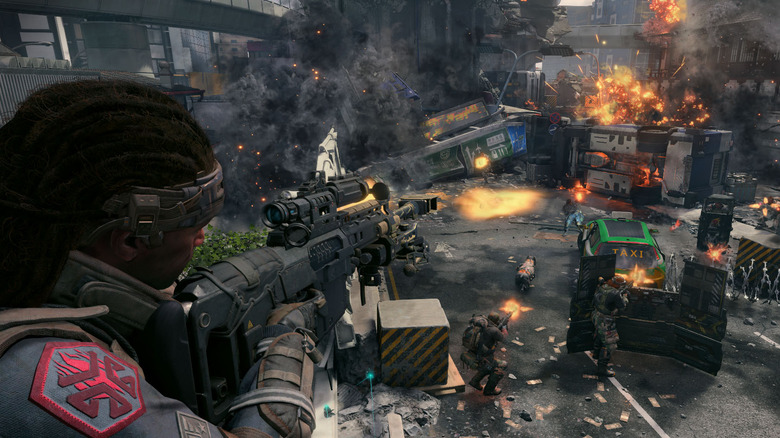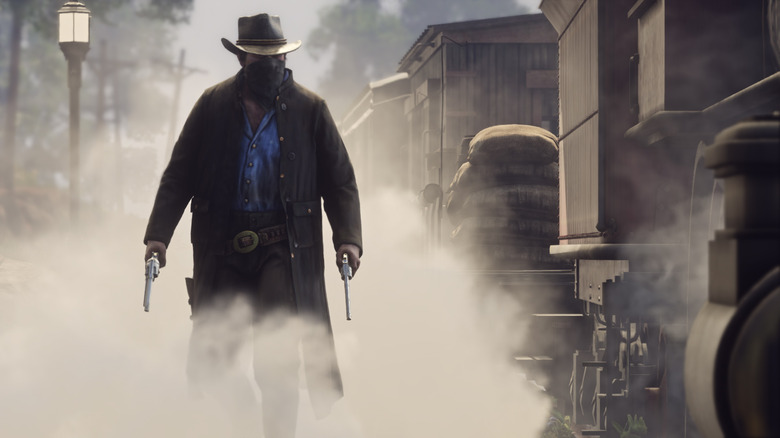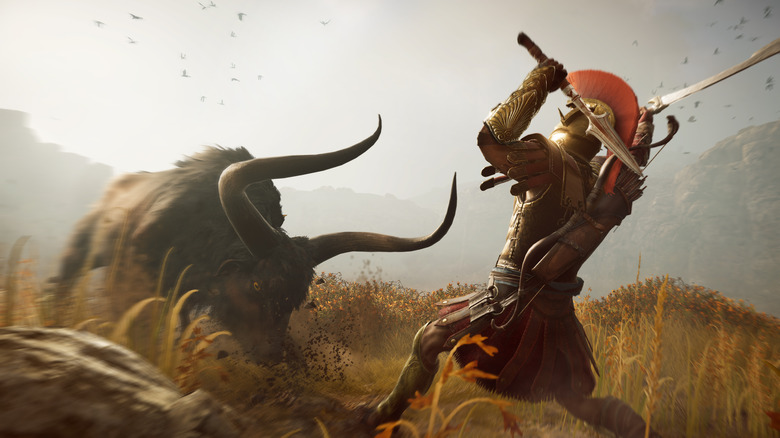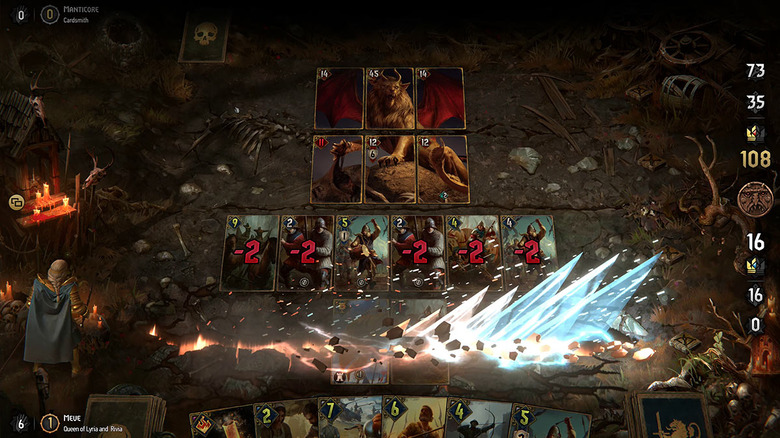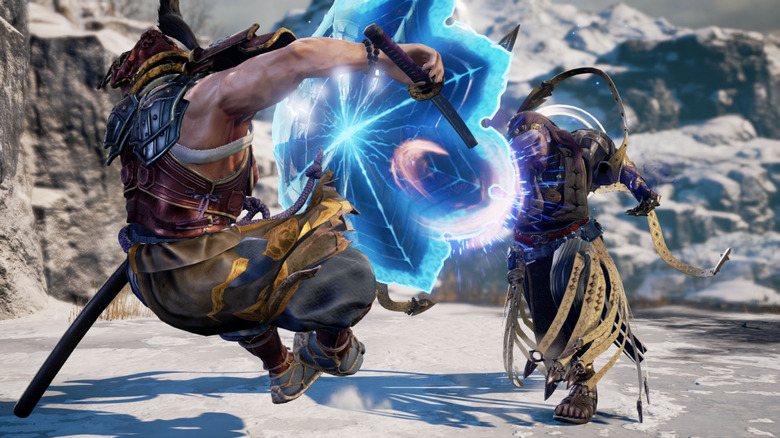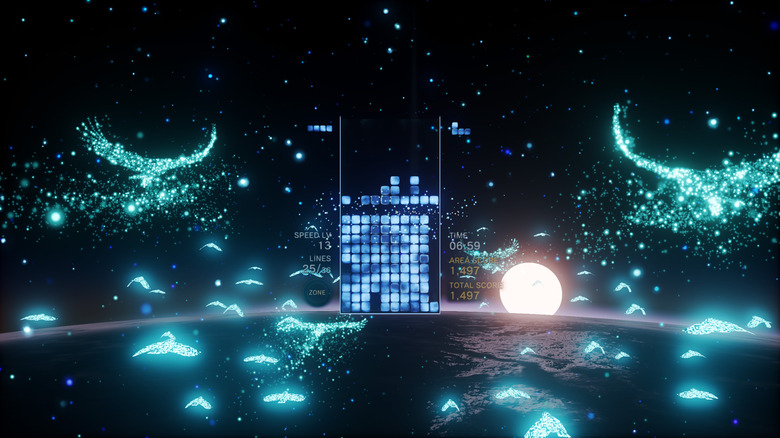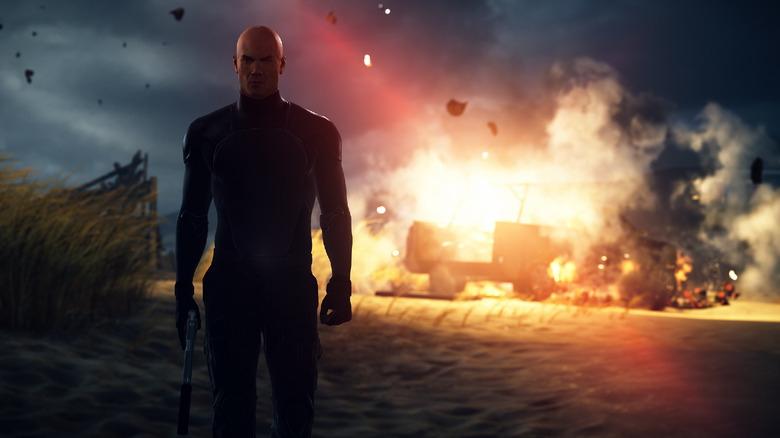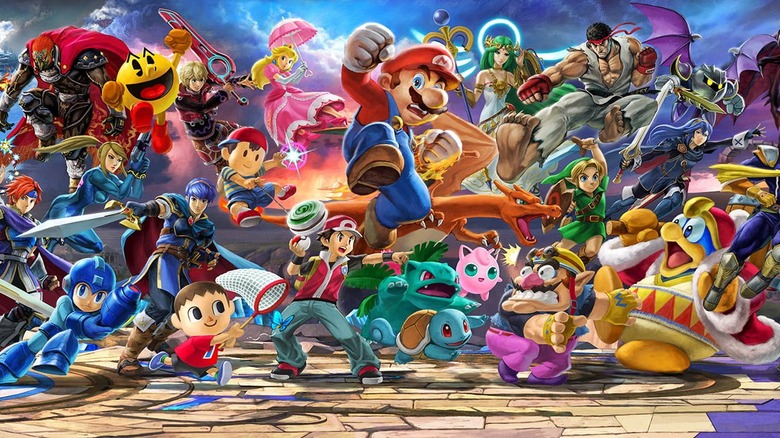These Are The Best Games Of 2018
In 2018, the gaming industry is both thriving and undergoing massive changes. AAA developers are struggling to balance soaring budgets, indie developers are fighting to get noticed in a neverending sea of shovelware, and the biggest games in the world just keep on getting bigger — at the expense of every other game. Fortunately, the industry has a new savior (loot boxes), but unfortunately, also a new devil (loot boxes). In all this upheaval, sometimes really cool projects get cancelled.
But at the same time, this is now a mature art form with veteran teams and auteur talent. When everything comes together and fires on all cylinders, we can get games that push boundaries, defy expectations, and even save dying franchises from themselves. Even with the increasing number of titles to play, these are the ones that rise to the surface, that you to fit into your schedule no matter what, even if you have to forego some others. From classics given new life to labors of love, here are all the best games of 2018.
God of War is to this generation what God of War was to the last generation
In 2005, the original God of War was a revelation. Technically, it didn't really do anything radically new; it just wove together a bunch of pre-existing ideas into a package that was so vital, fresh, and epic that it felt like it came out of nowhere. It was the absolute pinnacle of the action genre at the time. In a way, it was a marker for the very state of video games in the mid-2000s.
Fast forward 13 years, and everything old is new again. The new God of War – called God of War, not to be confused with the old God of War called God of War – has pulled off the same trick as its predecessor. In an era with superlative production values, more adult themes, and moral complexity, God of War has combined all of these elements and lifted them to new heights. And it hasn't forgotten that it's an action game, either: like the first game, it has weaved together everything that the action genre has learned of the last decade into a single near-perfect adventure. It is, once again, a marker for the very state of the art form.
Celeste proved that quality doesn't have to come from a huge team
God of War was made by giant developer Sony Santa Monica, a division of multinational conglomerate Sony (obviously). It had a sky-high budget and five years of development. So its quality, while still surprising, didn't spring from nowhere. But "quality springing from nowhere" is exactly what happened with Celeste, a retro-styled 2D platformer made by just two people. With no marketing budget and nothing on the surface to distinguish it from other such titles, Celeste managed to break out into mainstream awareness thanks to its sheer quality.
Celeste pushes the platforming genre to its very limits, exposing the player to a variety of levels that require pitch-perfect performance to navigate. While the pixelated style may be retro, the controls are as slick and responsive as any modern game, which they'd have to be to work in a game designed this precisely. Meanwhile, Celeste features a surprsingly resonant story about modern life, so by the end, your heart will ache as much as your fingers.
This is what happens when raw talent meets passion. If you have any interest in platforming at all, you owe it to yourself to checke out Celeste.
Shadow of the Colossus towers over the landscape, once again
We know what you're thinking: wasn't there already a legendary PlayStation-exclusive game from 2005 that has been resurrected with the exact same title in 2018 on this list? Answer: yes. Also answer: this one deserves to be here, too.
The original Shadow of the Colossus challenged everything the industry thought it knew about games. Enemies and combat encounters? Outside of the titular colossi, there were none. Dialogue? None of that here, at least not in a language anyone on this planet understands. Constant stimulation? Prepare for quiet, relaxing exploration instead. Despite, or maybe because of, bucking all these trends, Shadow remains a beloved landmark in the medium's history and still graces Best Game lists around the world.
So when Sony announced that they weren't just remastering, but remaking the classic game, expectations, and doubts, were sky-high. Could lightning possibly strike twice? Could a new, modern design ever match the brilliance of its predecessor? Answer: still yes. Critics found that the new game preserved everything that made the original a classic, and modernized everything that needed modernizing, all wrapped in the bleeding edge of current graphics. This is a must-play for old fans or for newcomers discovering it for the first time.
Monster Hunter: World expanded on an already-great series
Tired of reading about PlayStation games from 2005? Okay, let's talk about one from 2004! The original Monster Hunter was a sort of Pokemon for adults, in which players must track down large, powerful creatures and capture them. Fantastic as both an RPG and an action experience, the game spawned an entire series. But for whatever reason, that series was always an underground phenomenon here in the West.
For their 2018 release, Capcom stumbled onto an idea that they thought might interest more Western gamers: taking the series open-world. Perhaps referring to the new design, or perhaps referring to the new intended audience, the game was called Monster Hunter: World. According to the game's designer, Ryozo Tsujimoto, the new direction was made for creative and not commercial reasons. Maybe because of that, World went on to be a smash hit commercially, quickly becoming the fastest-selling Capcom game of all time.
And why shouldn't it? The game took everything that made the Monster Hunter series great, updated it with top-notch visuals, and then spread it all out over a massive playspace with hundreds of hours of content. Sometimes, everything just goes right on a game.
Dragon Ball FighterZ was far more than a quick cash-in
Years and years after its run ended, the anime Dragon Ball Z continues to cast a massive shadow over Western and Eastern geek cultures alike. For that very reason, tie-in products continue to be rolled out for the series, many of which are as good as ... well, any other tie-in. Which is to say that they're terrible.
Enter Dragon Ball FighterZ, which despite its silly title, actually turned out to be a fantastic fighting game in its own right. With simple yet deep mechanics and pro-level timings, this is the kind of game that can be picked up easily and yet only mastered by a very few. On top of that, the art style is a loving recreation of the original intellectual property, complete with the show's voice actors (both Japanese and English) and beautifully-rendered cutscenes that can occur mid-battle. Throw in a decent-length story mode, and Dragon Ball FighterZ is a fantastic experience that for some reason has a Z at the endZ.
Ni No Kuni II: Revenant Kingdom charted its own path, that's for sure
Ever wonder what would happen if an American President were struck by a nuclear missile, but instead of dying, he was magically transported to a fantasy realm to have fun and adventures? Well it's your lucky day, because Ni No Kuni II is here to answer that exact question. Taking that truly bizarre premise and making music out of it, this JRPG incorporates elements of strategy and empire-management games to create something fresh. Combined with its charming art style, the game has plenty to offer for both younger and adult gamers.
The overall result is one of the best games of 2018, which feels comfortably like a classic JRPG, yet sets off on a bold path all its own. And somehow, it never seems to buckle under all that weight. As Polygon states in its review, "There's no part of the game that feels more or less important, and there were no moments in the game where I thought I was slogging through exposition or kingdom management to pad hours in my playthrough. There's not a wasted breath or a plot point that doesn't manage to pay off in a significant way." Even if this typically isn't your genre, Ni No Kuni II might just be imaginative enough to deserve your attention anyway.
Batman: The Enemy Within is a fitting tribute to the Dark Knight
There are many Batman games. In them, Batman punches people. Perhaps he punches them with his fists, or perhaps he punches them with the aid of a bat-gadget. Maybe the game is open-world; maybe it involves vehicle mechanics. It probably involves a story of some sort. But Telltale Games decided to make a game that was less about what Batman did, and more about who Batman is. Batman: The Enemy Within is the story of a deeply broken man who just happens to be a billionaire with a penchant for capes. It may well be the best exploration of the character ever put to pixels.
Don't worry, though: Batman's fists are not neglected. Throughout the games five episodes, the Dark Knight will introduce many faces to his knuckles, done in the form of quick-time events rather than a traditional combat system. At the end of the day, though, the focus here is on Batman's relationships with those around him. Juggling his guilt, morality, duty, and sanity while also connecting to other human beings is, perhaps, the closest thing to a superpower that Batman has. Can you manage the same? You'll have to play to find out.
Yakuza 6: The Song of Life concludes a gaming legend's saga
The long-running Yakuza series has always blended hard-hitting gangster drama with Japanese sugar-pop sensibilities. While the quality has varied, the games have always been memorable and carved their own niche within the well-worn open-world crime genre. Yakuza 6: The Song of Life is not only the latest iteration in that series, but also the swan song of the franchise's protagonist. That's a lot of responsibility to handle, but Yakuza 6 managed to stay weird and wonderful enough to receive positive reviews.
The Verge called it "a brilliant send-off for one of gaming's best characters," while Destructoid said it's a "worthy conclusion to the legacy of Kiryu that wonderfully sets the stage for what is to come next." While most outlets admitted the sixth game wasn't quite as strong as some previous entries, it still brought the series' unique charm with no apologies. If you're a fan of the franchise, you owe it to yourself to see Kiryu's finale. And if you haven't checked Yakuza out yet, take a trip down into the Japanese underworld. It has sparkling cats.
MLB: The Show 18 does baseball proud
For the most part, sports video games don't come out with massive innovations too terribly often. For one thing, they're almost all annual, so developers are constantly racing to put out each game on time. For another, well, when's the last time baseball, the sport, got patched? It's hard to add a ton of imaginative features into a relatively static game.
But sometimes, you don't need to fix what ain't broke. MLB: The Show 18 reliably delivers Major League Baseball to players everywhere, and as IGN says, it's "better than ever, but not that much better." That still makes it the best representation of baseball to be found, with a complete contemporary roster of all teams. It looks beautiful, the controls are solid, and a streamlined upgrade system gives players the impression of an evolving narrative around their team.
Sometimes, you don't want the latest fashion; you want a comfortable pair of jeans that just fits right. MLB: The Show 18 knows exactly what it is and does exactly what it does, and it's proud of it. And what's more, it does it well. If you like baseball, there's no good reason not to pick up the best games for baseball fans out there.
Far Cry 5 made a non-linear franchise even more non-linear
The Far Cry franchise has always taken players off to distant, exotic, dangerous lands. And it's no exception in the latest installment, which takes them to ... America. Welcome to a Montana that's been overrun by a gun-toting religious cult. Your job: arrest the cult leader. Simple, right?
As you might expect, the task instead takes dozens of hours over a huge open-world terrain, provided you don't get distracted by side quests. But Ubisoft has been making these games for a while now, and they know how to fill that world with memorable characters, gorgeous environments, and a lot of opportunities for insane stunts. The story itself has been opened up, allowing you to figure out your own path in a nonlinear fashion. Along the way, you might encounter any number of enemies, civilians, and chances for mayhem in one of 2018's best games.
Forbes called Far Cry 5 "a wonderful first-person shooter sandbox game that will appeal to anyone who enjoys freedom in gameplay and doesn't mind an outrageous story." Who doesn't like at least something in that sentence?
Dark Souls Remastered brings a bona fide classic into the light
Believe it or not, but there are still some people who haven't played Dark Souls. There are just as many who seem more than happy to travel back to Lordran again and again and again. Good news for both parties: Dark Souls Remastered makes revisiting From Software's seminal action-RPG easier than ever. Mechanically, Dark Souls Remastered doesn't change the original all that much. The game looks great, though, and the higher resolution textures, stable frame rates (even in notoriously sluggish Blighttown), and a PC edition that doesn't completely suck are all welcome changes.
Honestly, if you've been holding out on Dark Souls, this is the time to check it out. The Souls games might be most famous for their unforgiving combat, but to dismiss Dark Souls as a merely a "hard game" does it a massive disservice. Mastering Dark Souls requires patience, experimentation, and precision. It's okay if you fail at first. Learning how to "git gud" is a big part of the fun.
Besides, Dark Souls' looping semi-open world is home to some of the best level design in video game history, and Remastered's technical improvements make its all-encompassing atmosphere more moody than ever. Dark Souls is a modern classic for a reason, and Dark Souls Remastered will show you why.
Street Fighter: 30th Anniversary Collection breathes new life into old favorites
Street Fighter isn't just one of the most profitable series of arcade games ever produced. It's one of the video game industry's true innovators. If you've ever enjoyed a game of Mortal Kombat, Tekken, or any other fighting game, you've got Street Fighter to thank. With Street Fighter: 30th Anniversary Collection, Capcom pays tribute to its blockbuster franchise with a compilation that includes 12 different Street Fighter games, including both the bare-bones original and the series' most influential entry, Street Fighter II.
These aren't the watered-down console versions, either. The Street Fighter: 30th Anniversary Collection is all arcade ports, meaning that you're getting the best versions of each of these various games. Don't fret over the ports' accuracy: with The Mega Man and The Disney Afternoon Collection's Digital Eclipse at the helm, Ryu and his buddies are in good hands.
Naturally, all of the games in the collection support local multiplayer, and four of the best come with full online support, too. If that's not enough the disc is also packed with concept art, behind-the-scenes documentation, a music player, and much, much more. It's a lot — casual fans might not need five different editions of Street Fighter II, for example — but this is a package for Street Fighter die-hards, who may never need to play anything else ever again (until Street Fighter VI hits, anyway).
Pillars of Eternity II: Deadfire delivers the old-school CRPG thrills you crave
Back in 2015, Pillars of Eternity helped pave the way for the return of big, crunchy, open-ended computer role-playing games like those pumped out by BioWare and Interplay back around the turn of the millennium. Now, the Pillars crew (with help from a number of passionate fans) is back for a second helping. Whether you import your old character from Pillars or roll a new one, you'll still play through Pillars of Eternity II: Deadfire as a Watcher, a mystic being with the ability to see other people's memories, and a responsibility to save Eora from a newly resurrected god.
If you haven't played the first game, don't worry. Deadfire neatly summarizes the events of the first game, and even lets you choose a background based on one of Pillars of Eternity's many endings. Either way, you'll quickly find yourself voyaging across one of role-playing games' most compelling settings, managing both your new ship, The Defiant, and its crew, and tackling problems both big and small.
Pillars of Eternity II: Deadfire is a dense and fiddly game, and it's easy to get overwhelmed by the sheer amount of stuff you have to pay attention to, particularly at higher difficulty levels. If you like role-playing games, stick with it. Pillars of Eternity II may not be perfect, but if you've got a soft spot for games like Baldur's Gate, Deadfire should be right up your alley.
Hit the road with Octopath Traveler
In recent years, portable systems like the PS Vita and the 3DS have become the go-to spots for fans of Japanese role-playing games, and while the Nintendo Switch is only a handheld part of the time, it looks like it'll be continuing that tradition. Just look at Octopath Traveler, which Square Enix built specifically for Nintendo's latest console.
Octopath Traveler mixes Super Nintendo-style characters with polygonal 3D backgrounds, recalling the JRPG's 16-bit glory days while keeping everything feeling fresh and modern. It's got a Final Fantasy-style job system and a branching narrative that lets players choose which of Octopath Traveler's eight characters to follow at any given time. The turn-based combat will scratch that old-school RPG itch, while the Boost Point and shield break systems, while not entirely original, keep things from getting too repetitive.
If you're not a fan of this type of thing, Octopath Traveler probably won't change your mind — like the games that inspired it, grinding for levels is a big part of the process — but if you're looking for a traditional Japanese role-playing game to while away the hours in 2018, Octopath Traveler will more than get the job done.
Mega Man X is a blast from the past
First off: if you're a retro-gaming fan, be warned that the Mega Man X Legacy Collection isn't handled by Digital Eclipse, the company behind the stellar Mega Man Legacy and Disney Afternoon collections. Thankfully, you won't notice. Like those games, the two-part Mega Man X Legacy Collection combines some of the very best action-platformers ever made into one package, then fills up the rest of the space with extras that are bound to delight hardcore Mega Man fans.
It doesn't hurt that the Mega Man X games still hold up after all of this time, especially Mega Man X 1 through 4, which are included on Mega Man X Legacy Collection 1. As in the normal Mega Man games, you'll take the Blue Bomber on a unique path through the game's evil Mavericks, exploiting their weaknesses in order to proceed. This isn't your daddy's Mega Man, though: Mega Man X can cling to walls and dash past obstacles, while his buddy Zero wields a lightsaber-like blade called the Z-saber.
The Mega Man X Legacy Collection comes with a bunch of fun bonus features too, including old commercials, animated shorts, various galleries, and some new game modes that keep things fresh.
Track treasure with Captain Toad
Technically, Captain Toad: Treasure Tracker isn't a new game. It came out back in 2014, and even managed to snag a few end-of-year award nominations. In those days, however, Captain Toad could only be found on the Wii U. Judging by that console's sales numbers — spoiler: they ain't good — the odds are pretty good that you didn't get to play it.
You should fix that immediately, especially now that Captain Toad has made his way to the 3DS and the Switch, the latter of which is already selling much, much better than Nintendo's last machine. Despite looking a lot like Super Mario 3D World, which inspired it, Captain Toad: Treasure Tracker isn't a quick cash-in. It's a charming, fiendishly clever puzzle game all of its own. Like Mario, Toad and Toadette must navigate enemy filled worlds in order to find the stars hidden at the end of each level. It's basically Mario if Mario couldn't jump: instead, Toad must rely on his pickaxe, vegetables (which he plucks from the ground Super Mario Bros. 2-style), and life-giving mushrooms if he's going to succeed.
Captain Toad: Treasure Tracker's newer editions don't come with too many extras — there's a half-baked multiplayer mode, a few Super Mario Odyssey-themed levels, and that's about it. It doesn't need them. Captain Toad is delightful from start to finish, and it more than deserves a second chance. Go ahead and give it one.
Crime may not pay, but in Yakuza Kiwami 2 it's awfully fun
There's never been a better time to dive into Sega's series of quirky Japanese crime dramas, Yakuza. Yakuza Kiwami, a modern remake of the original PlayStation 2 title, arrived last August, giving modern players a better way to enjoy a legit but dated classic. Now, a year later, Yakuza Kiwami 2 has arrived stateside, allowing both new and returning fans to continue the Yakuza story in HD.
Good thing, too, because while Yakuza 2 is the franchise's weakest entry, Yakuza Kiwami 2 is one of the best Yakuza titles to date. Partly, that's because the game has been rebuilt from the ground up on Yakuza 6's Dragon Engine, which means that Yakuza Kiwami 2 is a lot more impressive than the game that inspired it. Mostly, though, it's just because Yakuza Kiwami 2 has a lot more to do. All of your favorite Yakuza mini-games return, plus a few more. Want to duck into the nearest urinal for some "target practice?" In Yakuza Kiwami 2, you can.
Yakuza Kiwami 2 lets you spend a few minutes as recurring character Goro Majima, but only for a few minutes, and the game's plot is still one of the weaker in the series. That doesn't really matter. Yakuza's biggest attraction has always the freedom afforded by its weird and quirky open world, and in that respect, Yakuza Kiwami 2 doesn't disappoint one bit.
Battle for Azeroth puts the war back in World of Warcraft
Back when Warcraft was a series of real-time strategy games, the human-led Alliance and the monstrous Horde were sworn enemies. As World of Warcraft progressed, however, something happened. Faced with threats bigger than both of them, the two sides were forced to become reluctant allies as they battled the foes that arrived in World of Warcraft's various expansions.
Well, the Alliance and the Horde are friends no longer, and fans are thrilled about it. Battle for Azeroth, World of Warcraft's seventh major add-on, sold more copies on its first day than any Warcraft expansion before it. That's pretty darn good for a game that's pushing 15 years, but it's not surprising. With Battle for Azeroth, you've got new allied races like the Mag'har orcs and Void Elves, which you can try out for yourself once you've recruited them to your side. You've got new cooperative challenges called Warfronts, in which players must work together to build bases, a la Warcraft's RTS roots. Dynamic level scaling now applies across the map, and the Heart of Azeroth artifacts provide a bunch of new ways to make your character more powerful than ever.
And that's just what happened at launch. Blizzard has plans to keep the Battle going with new raids, new allied races, and more. Think World of Warcraft is on its last legs? Think again.
Marvel's Spider-Man swings into action
A long last, Marvel's number one hero gets his due. Don't get us wrong: there have been good Spider-Man games before. None of them, however, are like this one. It's not just that Marvel's Spider-Man sports the most ridiculous levels of polish that money can buy, an open-world map that's full of breathtaking views and things to do (but, crucially, not too many things to do), and some of the best web-slinging ever seen in a video game.
No, what makes Marvel's Spider-Man special is just how much it understands its lead character. Spider-Man isn't just a standard action game with a Marvel Comics skin on top. It's a bona fide Peter Parker simulator. You need to ping-pong between enemies and keep the fight in the air if you want to survive. When you're swinging through New York City, you'll find yourself studying the skyline, planning the fastest route between Manhattan's skyscrapers. Marvel's Spider-Man makes you think like its titular hero.
It doesn't hurt that Marvel's Spider-Man has a better storyline than most of the wall-crawler's Hollywood outings, too. Peter Parker is constantly torn between his crime-fighting duties and his personal life, and Insomniac's writers found ways to reconfigure and streamline Spider-Man's lore in ways that should delight both newcomers and the comics faithful. Marvel's Spider-Man isn't perfect, of course — those Mary Jane Watson and Miles Morales stealth stages are a drag — but it gets Spider-Man right.
Dragon Quest XI is old-school in some brand new ways
Japanese role-playing games sure are having a moment, aren't they? In 2017, Persona 5 arrived and immediately put Final Fantasy on notice. In 2018, Monster Hunter: World launched the Japanese blockbuster into the mainstream here in the West, Ni No Kuni became a legitimate best-seller, Octopath Traveler brought some retro JRPG flair to Nintendo's latest console, and Square Enix finally brought Dragon Quest XI stateside, making it the first entry in the series to get an American release in almost a decade.
Good thing, too, because Dragon Quest XI might just be the best entry in the series that more or less invented the genre. Not that Dragon Quest XI takes many risks, of course. It is, as many critics note, a very traditional affair. That means turn-based battles, a playtime that clocks in at dozens of hours, a plot that's stuffed full of well-worn fantasy cliches, and all that grinding. It also means that the cast is quirky and lovable; the characters and the monsters — designed, as per Dragon Quest tradition, by Dragon Ball creator Akira Toriyama — manage to be both cute and very, very bizarre; the dungeons are fun to explore; and the cartoony, cell-shaded world looks absolutely gorgeous.
If you're not sure about JRPGs, give Dragon Quest XI a shot. Dive in, and see what all of the fuss is about.
Destiny 2: Forsaken, but not forgotten
At first, players greeted Destiny 2 with open arms. But time time passed, and soon, the cracks started to show. Players discovered that the game throttled how fast characters could level up, subtly encouraging fans to spend extra money on microtransactions. The in-game Eververse store, where players can pick up loot boxes and cosmetic items, became a lightning rod for fan anger. After reaching the endgame, players discovered that there simply wasn't a whole lot to do. For the better part of a year, the Destiny controversies just didn't stop coming.
Enter Forsaken. In an attempt to clear up everything that fans didn't like about Destiny — while making sure to keep most of the stuff that they did — Bungie celebrated Destiny 2's anniversary by releasing an expansion that drastically overhauled the game. Like the original game's Taken King add-on, Forsaken is Bungie's chance to smooth things over.
By all indications, it succeeded. Oh, sure, Destiny 2's gameplay hook is still pretty much the same. You're still shooting guns in order to score bigger, better guns, but with Forsaken, it's a lot more fun to do so. Now, you'll level up faster, and new activities and features like Collections and Triumphs give you a reason to log in every day. The new raid is great, and Gambit, Forsaken's player-versus-player-versus-environment mode, is a blast. Finally — finally — it looks like Destiny is on the right track. Let's hope it stays there.
Valkyria Chronicles 4, as in for everyone
Tactical role-playing games used to be a niche genre. Not any more. Thanks to games like XCOM 2, Fire Emblem Heroes, The Banner Saga, and more, tactics games are finally getting the credit they're due.
That makes 2018 the perfect time to bring Valkyria Chronicles 4 to the masses. The people at Sega know it, too, and as producer Kei Mikami tells the official PlayStation blog, the latest installment in the Valkyria saga — and the first one in about seven years — was designed from the ground up to "attract new audiences worldwide." To do so, the Valkyria Chronicles team returned to the first game's military motif, a setting that evokes World War II's European front, and a plotline that stands alone.
Of course, none of this would matter if the game wasn't fun to play. Thankfully, it is. In ways, Valkyria Chronicles 4 feels more like a puzzle game than an RPG — no matter how long you play, it's always satisfying when a plan comes together — and yet there are no "right" answers. Valkyria Chronicles 4 gives you plenty of room to get creative. Combine that with some more subtle refinements and the series' signature hook (after you issue orders, you'll take control of your units and attack manually), and you end up with the best Valkyria adventure to date. If war games are your thing, make sure to give Valkyria Chronicles 4 a spin.
Lara Croft emerges from the Shadow of the Tomb Raider
In Shadow of the Tomb Raider Lara Croft becomes the hero we all fell in love with back in 1996. Wait, that's what 2013's Tomb Raider was supposed to do? And its sequel, Rise of the Tomb Raider? Eh, forget those. This time, Eidos Montreal (with an assist from long-time Tomb Raider stewards Crystal Dynamics) means it. Shadow of the Tomb Raider is the final entry in the Tomb Raider reboot trilogy. By the end, Lara's journey is complete.
That also means that Shadow of the Tomb Raider is the third game in the series, and in terms of gameplay, Shadow of the Tomb Raider sticks pretty faithfully to the foundation established by its two predecessors. Thankfully, those games are really good. Besides, Shadow gives you more tombs to raid than ever, and the thanks to the new puzzle-specific difficulty modes, which eliminate visual goalposts and make in-game hints more cryptic, exploring feels more like a real adventure, and less like, well, a video game.
It's in Shadow of the Tomb Raider's story, which challenges' the franchise's entire premise, where Eidos Montreal takes some real risks. A posh white girl invades other cultures' homes, kills loads of people, and steals their stuff? That's not fun. Instead of ignoring the series' uglier side, though, Shadow of the Tomb Raider tackles it head on. It doesn't always work, but boy is it gutsy. That alone makes it worth your time.
When is a racing game not a racing game? When it's Forza Horizon 4.
Think Forza Horizon 4 is a relaxing drive through the British countryside? Think again. In the latest (and best-reviewed) entry in the Forza Horizon series, you will be driving past quaint little farms, through pastoral villages, and down seldom-traveled dirt roads, but the laid-back setting doesn't mean that Forza Horizon 4 lacks action. Far from it. In fact, with 26 different types of competitions to master, including one series that pays tribute to classic racing games, Forza Horizon 4 has enough content to keep gearheads busy for years.
But Forza Horizon 4's setting is a big part of its appeal, and if your tastes lean more towards open-world games than racing titles, you're still going to find Forza Horizon 4 a whole lot of fun. See, the game is about more than just crossing the finish line. It's about exploring, too. Forza Horizon 4's virtual United Kingdom is full of routes to discover, billboards to find, and blueprints to locate and unlock. The seasons change every week, introducing new and unique challenges each time.
Not convinced? There's more. If you game for the social interaction, well, Forza Horizon 4 supports up to 71 players in the game at a time. If you want some Animal Crossing customization, buy a house and decorate it, or fiddle with your vehicle and put your personal stamp on things. For the artistically, inclined, Forza Horizon 4 comes with a robust photography mode. Cars feature on the box, but Forza Horizon 4 is about more than racing. It's got a little something for everyone.
Answer the Call of Duty: Black Ops 4
You might've heard that Call of Duty: Black Ops 4 is the first entry in the franchise without a single-player campaign. Well, here's the thing: it doesn't need one. We're not just saying that because most people tend not to finish Call of Duty campaigns these days. We're saying that because, after spending hours and hours with Call of Duty: Black Ops 4, we don't miss the campaign at all. You probably won't, either.
It's not that Call of Duty: Black Ops 4 doesn't have a plot. It's just that, this time around, the stories are woven into the game's multiplayer components. If you want a narrative, Call of Duty: Black Ops 4's cooperative zombie mode has several of 'em. Before you dive into Call of Duty: Black Ops 4's competitive multiplayer — which, yes, is as fun and polished as you've come to expect — you'll can delve into the Solo Missions, which teach you how to play various Specialists while fleshing out their backstories.
And then there's Blackout, Black Ops 4's take on the battle royale genre. Blackout could've been a quick, Fortnite- and PUBG-inspired cash-in. Instead, it's a thoughtful and addictive take on 2018's hottest genre, and opens up a whole new frontier for the franchise. While ignoring tradition hasn't worked out so well for the series in the past — hey there, Infinite Warfare — Black Ops 4 proves that, sometimes, change can be good. Everything needs to evolve to survive, even Call of Duty. With Black Ops 4, it finally has.
Red Dead Redemption 2 transports you to an older, slower time
The first few hours of Red Dead Redemption 2 seem designed to drive you crazy. The game's controls are clunky and dated. It offers you the impression of meaningful choice, but then forces you to play through missions on a linear, predetermined path. It's really, really slow, too. The opening mission takes place in the middle of a snowstorm, reducing your movement speed by about half. You can only loot items one-by-one. Searching through chests and closets takes forever. A madcap Grand Theft Auto-style caper this ain't.
Don't resist. Simply give in. Once it opens up, Red Dead Redemption 2 reveals the most diverse and interesting cast of characters that Rockstar has ever assembled. Its landscapes are stunning. Its mysteries are plentiful and compelling. Hop on your horse and ride in any direction for long enough, and you're guaranteed to find something cool, interesting, or unexpected to talk about on forums or with your friends.
Look, Rockstar's formula is starting to show its age, and at some point, the company is going to have to stop making the same game over and over again (and no, Red Dead Redemption 2's disappointingly shallow conversation system isn't enough to revitalize the formula). Until that happens, though, don't try to tough out the game's deliberate pace. Embrace it. Red Dead Redemption 2 isn't a sprint. It's a game that's designed to be enjoyed over years, and the sooner you accept that, the more compelling that Arthur Morgan's adventure will become.
Assassin's Creed: Odyssey is the stuff that myths are made of
It's finally happened. At long last, Assassin's Creed has completed the transition from an open-world stealth-action hybrid into a fully-fledged role-playing game. You can choose your character. You've got levels to gain and skills to unlock. More importantly, though, Assassin's Creed: Odyssey gives you real choices. Should you spare a disease-ridden family, or kill them to save their neighbors? Should your rebel friends rely on power to subdue their foes, or resort to cunning and strategy to get the job done? It's up to you.
Those are the kinds of decisions you'd expect to see in games like The Witcher 3 or Mass Effect, not Assassin's Creed, but it's 2018 and here we are. You can see the influence of other games on Odyssey, too, especially the mercenary system, which borrows quite a bit from Middle-earth: Shadow of Mordor. It's still Assassin's Creed, of course. Moving the action to ancient Greece keeps the franchise's spirit of historical tourism alive and well, and you'll still spend plenty of time scrambling up walls, leaping between buildings, and clearing icons off of your minimap.
As a result, at times Assassin's Creed: Odyssey feels like a mishmash of ideas, especially during the first 15 hours. That's a lot of time to invest in a game before it gets good, and we wouldn't blame you for bailing before that. Stick with Odyssey, though, and you'll find an adventure that's worth the wait. Sure, Assassin's Creed might be taking 2019 off, but don't worry: Odyssey has more than enough content to tide you over until then.
Thronebreaker: The Witcher Tales plays all its cards right
In The Witcher 3: Wild Hunt, Gwent was a side activity. In Thronebreaker: The Witcher Tales, it's the main attraction. Thronebreaker isn't just a card game, though, and if you're staying away because games like Hearthstone and The Elder Scrolls: Legends aren't your cup of tea, you might want to reconsider. Thronebreaker uses cards to drive the action, but it's is a fully-fledged role-playing game with everything that entails.
That means that you'll be getting a complete single-player campaign, complete with a brand new, 30-hour adventure that's steeped in Witcher lore. After a decade on the sidelines, Meve, queen of Lyria and Rivia, takes center stage as she tries to rally her troops and fight off the invading Nilfgaardians. As you help her, you'll encounter all kinds of interesting, well-rounded characters, and you'll be forced to make a number of hard choices in your quest for victory. If you're familiar with Geralt's story, you know what's in store. Like The Witcher 3, Thronebreaker plays for keeps.
If you do like card games, then don't worry. Thronebreaker's main action takes the form of Gwent matches. In fact, even if medieval fantasy isn't for you, you might find Gwent's strategy layer and card-based puzzles compelling enough to stick around anyway. No, you won't get to test your mettle against other players — that's what the stand-alone Gwent is for — but you will get to see what digital card games are capable of. As Thronebreaker: The Witcher Tales proves, the genre is just getting started.
For SoulCalibur newbies, sixth time's the charm
With Dragon Ball FighterZ taking the world by storm and Super Smash Bros. Ultimate on the way, it felt like 2018 was pretty much set as far as fighting games are concerned. Then, along came SoulCalibur 6. Don't overlook the latest entry in Bandai Namco's sword-slinging brawler, especially if you're relatively new to fighting games. SoulCalibur 6 may not be dominating the headlines, but it's as slick as polished as they come, and it's a great place for newbies to jump on.
If you're not up on your SoulCalibur lore? No problem. SoulCalibur 6 is a reboot that goes back to the franchise's very beginning to reveal some "hidden truths." The game's combat preserves everything that makes SoulCalibur unique, but streamlines it all, making everything more accessible. You don't need to memorize complex combos or complicated special moves in order to do something cool. If you're too intimidated to take the fight online, SoulCalibur 6 ships with two separate single-player campaigns.
SoulCalibur 6 is goofy as heck, too, thanks to the one-two punch of its guest stars, which include NieR: Automata's 2B and the Witcher himself, Geralt of Rivia, as well as its remarkably flexible character creation system. Spend a few minutes on the SoulCaliburCreations subreddit and just try not to laugh. There are many fighting games out there battling for your time, so make sure that SoulCalibur 6 gets the attention it deserves. It's earned it.
Tetris Effect puts all the pieces into place
You don't need anyone to tell you how great Tetris is. C'mon. It's Tetris. You know the drill. Alexey Pajitnov's deceptively simple puzzle game has been delighting audiences since 1984. Even if you don't play video games regularly, there's a good chance that Tetris has gotten its hooks into you at some point in the past. Tetris isn't just a game. It's a cultural institution.
But even if you're a grizzled Tetris veteran, you've never played the game quite like this. Sure, when it comes down to it, Tetris Effect still has you placing tetrominoes and clearing lines. But Tetris Effect's electronic soundtrack changes based on how the falling pieces move. The music's tempo dictates how fast each block falls. Trippy visuals and pitch-perfect controller rumbles give Tetris Effect a soothing, tactile edge. You don't play Tetris Effect. You experience it. That's exactly what creator Tetsuya Mizuguchi intended. The game comes with an optional VR mode for a reason, after all.
If you're looking for new mechanical innovations, Tetris Effect has some of those too. Tetris Effect's Zone mechanic will let you clear up to 12 lines at once, and there are a few new modes and challenges that'll shake things up. With Tetris Effect, however, the presentation is the main draw. Tetris has never been this immersive or this relaxing, and if you think that $40 is too much to drop on a game you've already sunk hundreds of hours into, well, that just means that you haven't played Tetris Effect yet. Trust us. It's worth every penny.
Hitman 2 makes murder personal
Agent 47's been through a number of ups and downs over the years, but ever since IO Interactive gave the Hitman franchise a soft reboot back in 2016, it's been a lot more hit than miss. Hitman 2 continues that tradition. Instead of a simple stealth-based action game, the new Hitman is more like a giant, murderous playground. The game is comprised of a half-dozen massive levels, and once you get your target, it's up to you to decide how you want to proceed. Want to be a suave, efficient killer? Go ahead. Want to goof it up, leaving chaos and bodies in your wake? That'll work too.
Of course, Hitman 2 is a sequel, and as such Agent 47 has some new tricks up his well-coiffed sleeve. Instead of reusing Hitman's episodic release model, Hitman 2 arrives as a full package, although the game's time-limited Elusive Targets will keep things fresh as time goes on. Cooperative assassinations are a thing now, and Agent 47's briefcase will let you smuggle big weapons through crowds with relative ease.
All-in-all, though, Hitman 2 is more of the same. Heck, the 2016 game's levels have even been remastered for the 2018 edition. That's fine by us. IO Interactive builds great sandboxes, and the studio has a wicked sense of humor — casting perpetual victim Sean Bean as Hitman 2's first Elusive Target is a cheeky masterstroke — and when it all comes together, Hitman 2's sneaky action simply can't be beat.
Super Smash Bros. Ultimate lives up to its name, and then some
You've heard the marketing pitch: Super Smash Bros. Ultimate is the be-all, end-all of the Super Smash Bros. series. It has every character in the series' history, in addition to a handful of newcomers including Castlevania's Simon Belmont and Donkey Kong's arch-nemesis, King K. Rool. It has over 100 levels, each one of which comes in three different forms. There are somewhere between 800 and 1,000 music tracks, depending on who you believe, and while trophies might be gone, Super Smash Bros. Ultimate gives you 1,300 ability-granting "spirits" to collect.
But Super Smash Bros. Ultimate is more than just the numbers. Not only is Smash's core gameplay loop — choose your favorite video game character, and then use them to knock other fighters off of floating platforms — still just as fun as it was back in 1999, but Super Smash Bros. Ultimate gives you so many different ways to play that you're bound to find something you like. If you enjoy single-player adventures, check out the World of Light campaign. Chaotic 8-player battles are sure to keep party guests happy, the Spirit Board is catnip for collectible fiends, and the tag team-like Squad Strikes lead to all kinds of interesting and unexpected match-ups.
Really, the only bummer is Super Smash Bros. Ultimate's iffy online infrastructure, which Nintendo still hasn't managed to get completely right. Otherwise, it's all gravy. It doesn't matter if you're a tournament pro or you're just here for ample helpings of fan service. Super Smash Bros. Ultimate is for everyone, you included.

